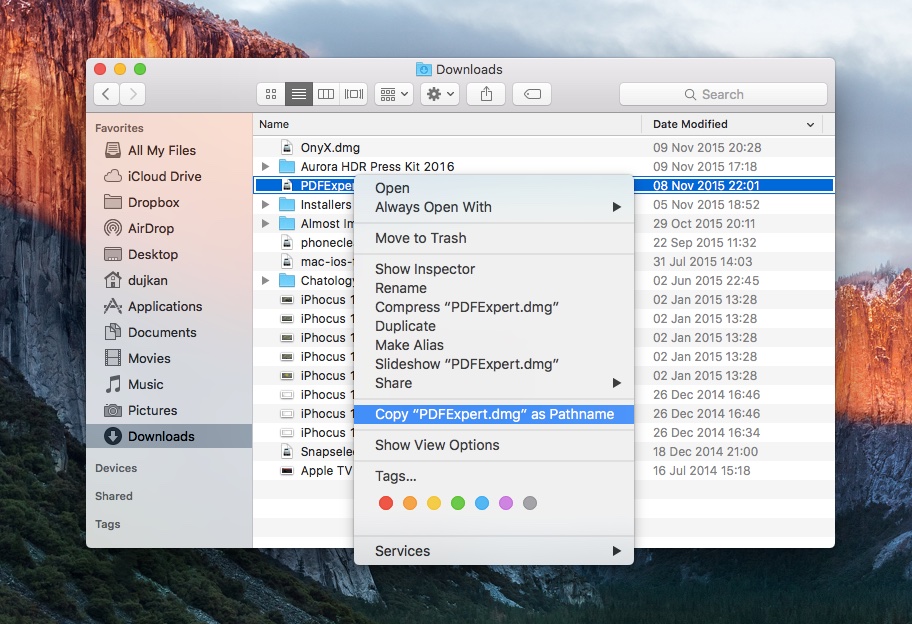
- #SHOW FILE PATH MAC FINDER MAC OS X#
- #SHOW FILE PATH MAC FINDER INSTALL#
- #SHOW FILE PATH MAC FINDER PRO#
- #SHOW FILE PATH MAC FINDER WINDOWS#
The list of things you can add or remove is quite extensive and changing these settings can make Finder Sidebar more useful for you. On a side note, you can add or remove different items from the Finder sidebar using the same preferences page. Once you do so your Mac’s hard disk will appear in the sidebar of every Finder window, giving you quick access to useful directories.

Click on the Finder option from the menu bar and click on ‘Preferences’.The same steps also apply for macOS Catalina or later. Here you can find detailed instructions on how you can enable and show Macintosh HD in Finder Side in macOS High Sierra or later. However good news is you can get easy access to your Mac’s Macintosh HD directory by adding it in your Finder’s sidebar. olm), and click the right arrow towards the right-bottom. In the Import window that opens, select Outlook Data File (.pst or. You can’t even access hard drive directory even when you search for it in finder search or Spotlight. Launch Outlook, and under the File tab, select Import. This can be particularly annoying when you want to add, copy or remove a file from a directly that can be accessed through Macintosh HD.
#SHOW FILE PATH MAC FINDER PRO#
These folders contain files that can be immensely handy to a pro user as they contain files that allow you to make changes to your computer.īy default macOS High Sierra may not show you the Macintosh HD folder anywhere in Finder, making accessing it quite difficult. You can launch it and view the stored data in your system. For instance, lets consider that we are using Forklift on our Mac.
#SHOW FILE PATH MAC FINDER INSTALL#
To start with, just install and launch a reliable File Manager. On this macOS Hard Drive directory you get access to a number of folders including Library, System, Users and Applications. Some of the popular Mac File Managers are Forklift, Path Finder, muCommander, Leap, Xtra Finder, etc.

#SHOW FILE PATH MAC FINDER WINDOWS#
You will now immediately see the path bar at the bottom of the Finder windows: All new Finder windows now show the path by default. Drag down the View menu and select Show Path.
#SHOW FILE PATH MAC FINDER MAC OS X#
After the alias execution when you open a Finder, it will display the hidden files as you want. Go to Mac OS X Finder, if you’re not already there, open a directory or Finder window to see the path bar as soon as it’s on.bash_profile file, and then run the alias. If you want to display hidden files every time when you open a macOS Finder, you can write the below script alias in the MacOS user’s.Enable Show Hidden Files Permanently By Script Alias. again, it will hide all those hidden files. Press the key combination Command + Shift +. It will show the hidden files in the macOS Finder.

Open the macOS Finder and go to your desired folder.


 0 kommentar(er)
0 kommentar(er)
